


It’s easy to get caught up in the bustling world of today, with its chaotic external environment and a stressed-out internal experience. It has become essential to take some time apart to be able to connect with ourselves, and this is where somatic yoga comes to the rescue.
Somatic yoga encourages you to feel and listen to your needs, providing a nurturing and healing space. But how does it work, and what are these exercises? Read more to find out, it’s self-care all the way!
What is Somatic Yoga?
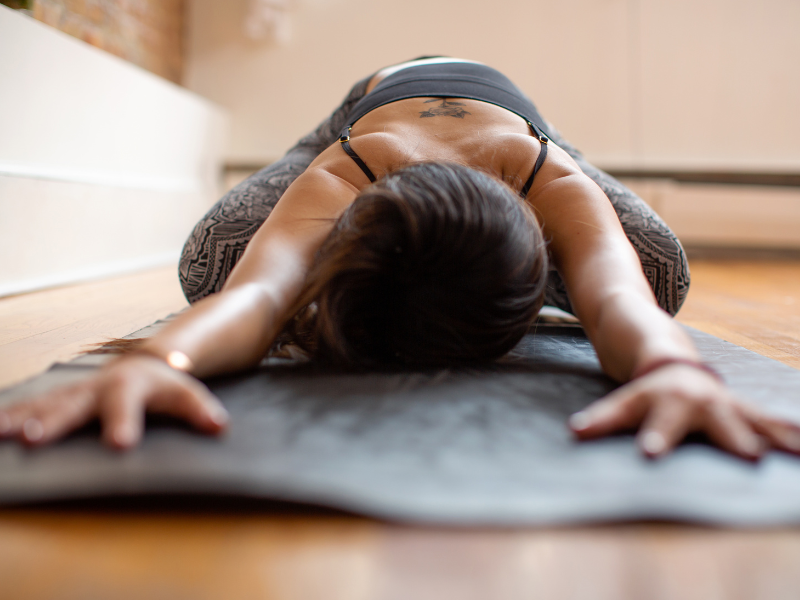
Somatic Yoga is a type of somatic workout – mindful movement practice that focuses on deepening body awareness by exploring physical sensations and internal experiences, such as tension, relaxation, breath, emotions, and more. Developed by Eleanor Criswell, it combines somatic principles (mind-body integration) with elements of Hatha and Raja Yoga [1]. The practice encourages slow, gentle movement to cultivate curiosity and compassion toward the body’s internal experiences. Somatic research plays a crucial role in developing and validating the principles of somatic yoga.
Somatic Yoga draws from various disciplines, including neuroscience, psychophysiology, and psychology, to promote healing and balance [2]. By integrating cathartic somatic exercises with the spiritual and holistic aspects of yoga, somatic yoga offers a therapeutic approach that enhances both physical and emotional well-being.
What’s The Difference Between Yoga and Somatic Experiencing?
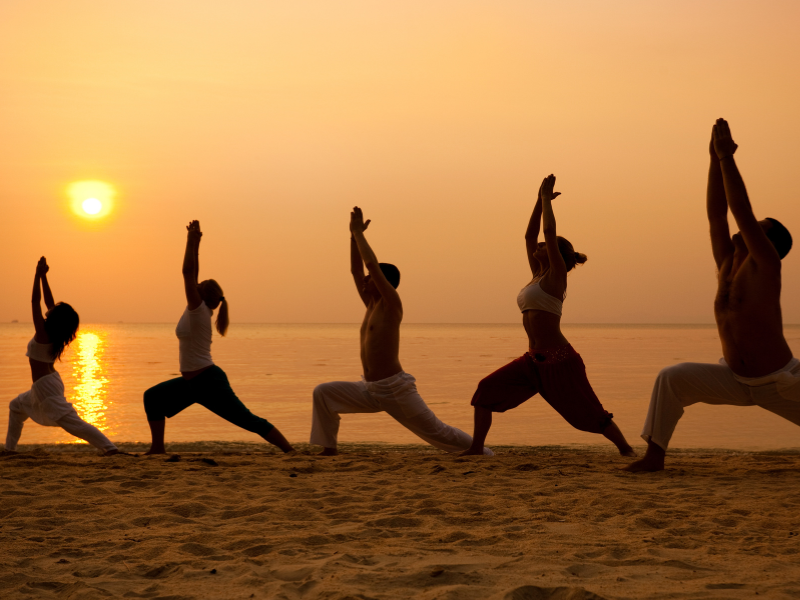
Yoga and Somatic Experiencing (SE) are both body-centered practices, but they differ in focus and purpose.
- Yoga is a holistic system that promotes overall well-being through the practices of physical postures, breathing techniques, meditation, and philosophical principles [3]. It includes various styles, such as Hatha, Vinyasa, Ashtanga, and Yin, each with a different emphasis on movement, breath, and alignment. While yoga can enhance body awareness, its goal is broader, aiming to balance body, mind, and spirit.
- Somatic Experiencing, developed by Dr. Peter Levine, is a therapeutic approach focused specifically on healing trauma and stress. Somatic movement helps release stored emotions and restore balance to the nervous system by tuning into bodily sensations, especially those related to past trauma [4].
- The key difference is that yoga is generally about overall health and well-being, while Somatic Experiencing is a targeted therapy for trauma recovery. Somatic Yoga, which blends somatic therapy principles with yoga, focuses on inward body awareness, using sensations as feedback to guide movement, while more goal-oriented yoga styles may be less focused on internal experience. Somatic yoga encourages practitioners to move at their own pace, promoting mindfulness and comfort during practice.
For more yoga-based exercises:
10 Easy Yoga Mat Workout to Build Strength
How To Do the Yoga Push-Up Effectively
How Does Somatic Yoga Release Trauma?
Trauma often leaves lasting physical effects, including chronic activation of the fight-or-flight response, which somatic therapies, like Somatic Experiencing, aim to address. A 2021 study on this approach to trauma treatment found promising evidence that it can reduce PTSD symptoms by focusing on the body’s response to stress. Through mindful movement and focused breathing, we can become more aware of our bodies and emotions, ultimately feeling more alive and engaged with our lives.
Research supports the benefits of somatic practices, with studies showing that focused breathing improves emotional regulation and meditation can alleviate anxiety and depression [5]. Somatic yoga can defintely be a step towards processing and confronting difficult emotions that can help with breaking the cycle of freeze, flight, and fawn. However, it is still important to seek professional help in order to manage severe trauma.
Top Somatic Yoga Exercises to Try
Here are some of the best somatic yoga poses and somatic exercises to help you forge the mind-body connection that you’re looking for. Being attuned to your body feel during these exercises is crucial for enhancing your physical and emotional well-being.
1. Seated Side Body Stretch
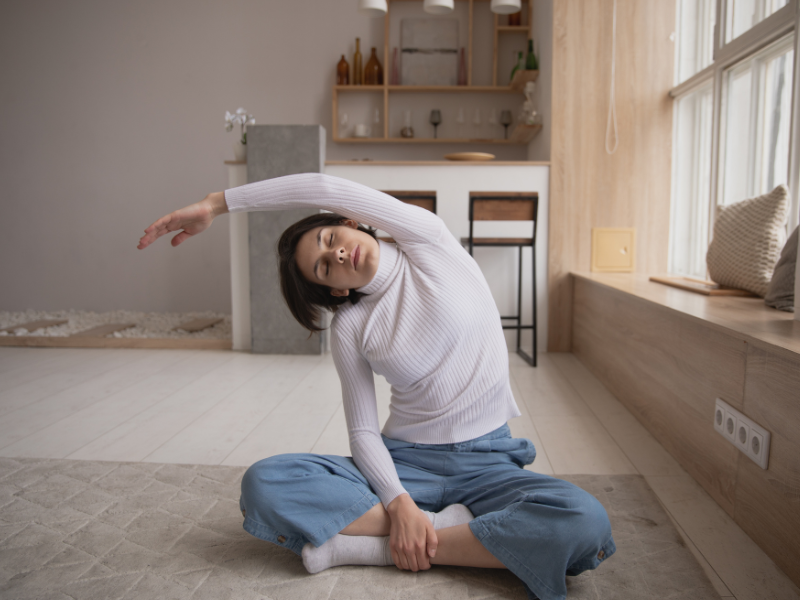
Instructions:
- Sit upright with your legs extended or cross-legged, spine long, and shoulders relaxed.
- Engage your core by drawing your navel toward your spine to support your posture.
- Inhale and reach your right arm up toward the ceiling. Exhale and lean your torso to the left, bringing your right arm overhead, reaching toward the left side.
- Stretch deeper by gently pressing your right hip down while extending your arm further. Keep your chest open and neck relaxed.
- Hold for 3-5 breaths, deepening the stretch with each exhale.
- Inhale to return to center, and repeat on the other side. This dynamic stretching is great to warm up the body too.
2. Cat Cow Pose
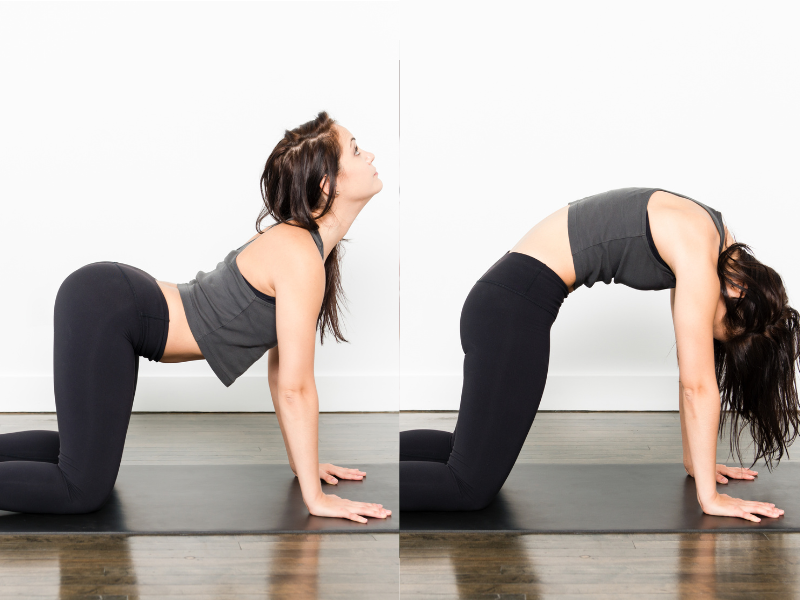
Instructions:
- Start with the tabletop pose, on hands and knees, wrists under shoulders, knees under hips, fingers spread wide.
- Inhale into the cow pose as you arch your back, lift your tailbone and chest, drop your belly, and gently gaze up.
- Exhale into the cat pose as you round your back, tuck your chin to your chest, and draw your belly button in.
- Continue moving between Cow and Cat, syncing breath with movement.
3. Neck Rotations
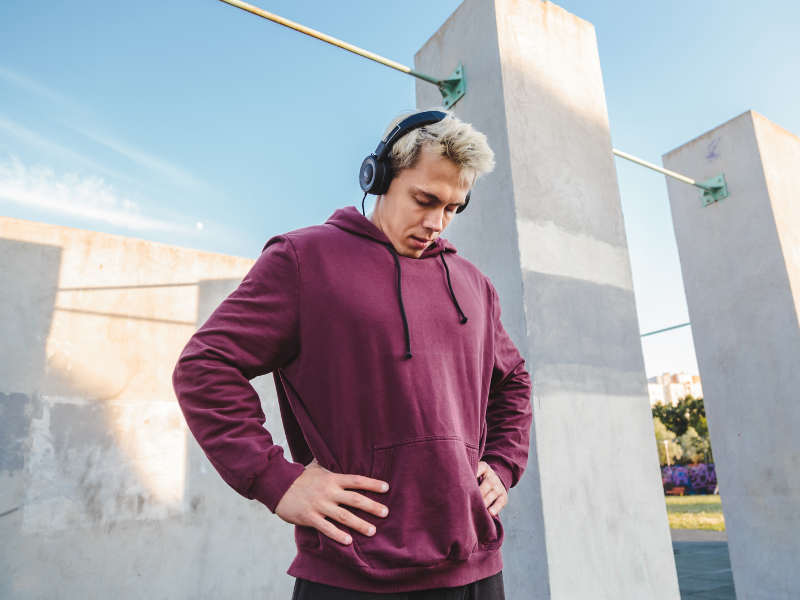
Instructions:
- Sit or stand with your spine tall and shoulders relaxed.
- Slowly drop your chin toward your chest to start the movement.
- Inhale as you begin to roll your head to the right, bringing your right ear toward your right shoulder. Exhale as you continue the circle, bringing your head back, then left, and around to the front.
- Make 3-5 circles in one direction, then reverse and repeat in the opposite direction. This technique often helps with neck aches and chronic pain management.
4. Self-Hug
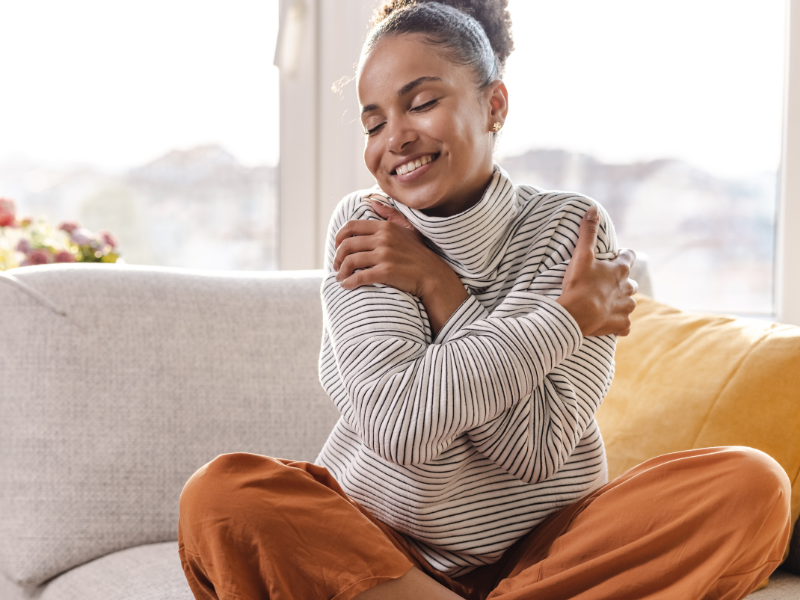
Instructions:
- Sit comfortably, on a cushion or chair, and wrap your arms around yourself in a gentle hug. Squeeze lightly on the inhale, and soften on the exhale.
- Notice how it feels to embrace yourself. Optionally, sway gently or round your spine, bowing your head to go inward.
- Soften your gaze or close your eyes. Move in a way that feels good.
- Breathe towards your upper body, relax your jaw, and sense the warmth of your hands.
- Observe any thoughts, emotions, or sensations.
- When ready, release your hands, sit in stillness, and notice how you feel. Open your eyes, reconnect with your space, and follow your breath.
You may also like other stress-releasing workouts:
Recover and Restore Relax Workouts
5. Bridge Pose
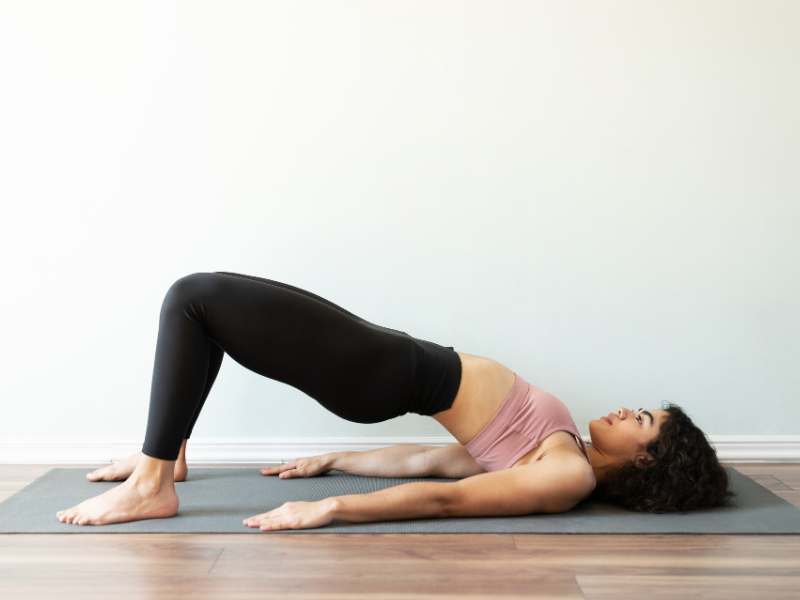
Instructions:
- Lie on your back with knees bent, feet hip-width apart, and arms by your sides, palms facing down.
- Press your feet into the floor and lift your hips toward the ceiling, engaging your core and glutes.
- Keep your thighs parallel and avoid letting your knees splay out. Hold for 5–10 breaths.
- Release slowly, lowering your hips one vertebra at a time. This exercise is also known as the glute bridge.
6. Full Body Scan
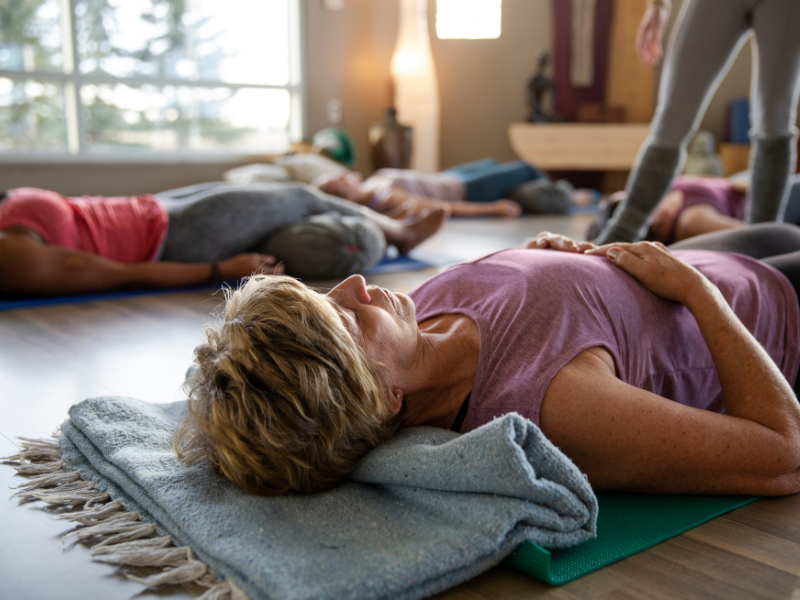
Instructions:
- Lie on your back with your legs extended and arms by your sides, settling into the surface beneath you. Optionally, draw your shoulder blades down to create space.
- Close your eyes or soften your gaze. Begin by scanning your body from feet to head, noticing areas of contact with the floor.
- Observe any lifted areas and feel the support of the ground beneath you.
- Tune into your breath, noticing its movement through your body.
- Scan for tension, moving from feet to head. Breathe into areas of tightness to encourage release.
- Rest in Savasana for 10-20 minutes, allowing your body to fully relax.
7. Butterfly Pose

Instructions:
- Sit with your spine tall, bend your knees, and bring the soles of your feet together, letting your knees fall open.
- Hold your feet or ankles, keeping your back straight.
- Gently press your knees down, feeling a stretch in your inner thighs and groin.
- Hold for 5–10 breaths, then release and extend your legs.
For more yoga-based stretches:
8. Head on Knee Pose
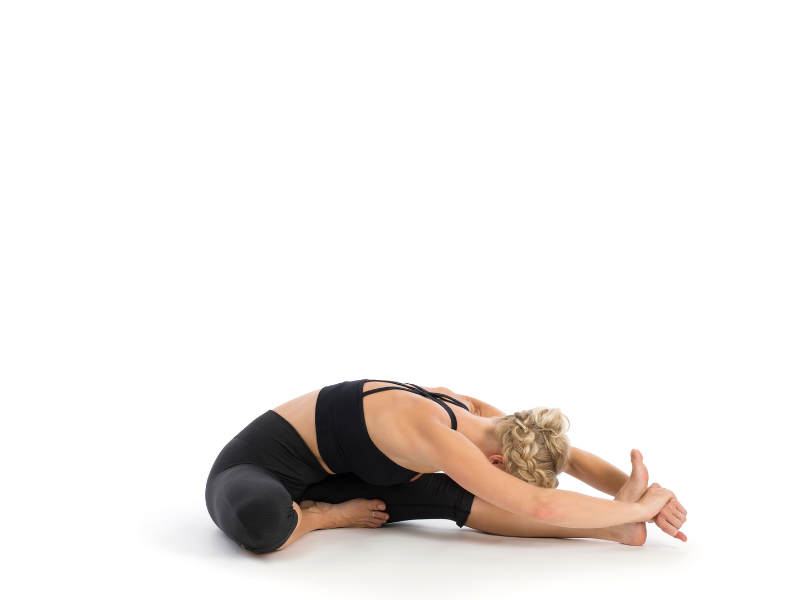
Instructions:
- Sit with legs extended, bend your right knee, placing the sole of your foot against your left inner thigh.
- Lengthen your spine on an inhale, then fold forward over your left leg on the exhale, reaching for your foot, ankle, or shin.
- Hold for 5–10 breaths, keeping your back long.
- Switch sides, repeating the pose on the other leg.
Final Thoughts
Somatic yoga is a great exercise to incorporate into your daily life for releasing tension, managing stress, and understanding your body and its physical pain better. If you’re still unsure of how go to about these exercises, you can always consult trained yoga teachers who can guide you through the process. For more resources and tips on yoga exercises and workout routines, check out the JustFit app!
What is somatic yoga?
Is somatic yoga good for beginners?
What is the difference between restorative yoga and somatic yoga?
What is an example for somatic yoga pose?
Galantino ML, Tiger R, Brooks J, Jang S, Wilson K. Impact of Somatic Yoga and Meditation on Fall Risk, Function, and Quality of Life for Chemotherapy-Induced Peripheral Neuropathy Syndrome in Cancer Survivors. Integrative Cancer Therapies. 2019;18. Available at: doi:10.1177/1534735419850627
Hanna, E. C. (n.d.). SOMATIC YOGA TRAINING 2024: One-year Training - Professional Training Program in Somatic Yoga. Somatics Educational Resources - Somatic Yoga training. Available at: http://www.somaticsed.com/Yoga.html Kuhfuß, M., Maldei, T., Hetmanek, A., & Baumann, N. (2021). Somatic experiencing - effectiveness and key factors of a body-oriented trauma therapy: a scoping literature review. European journal of psychotraumatology, 12(1), 1929023. Available at: https://doi.org/10.1080/20008198.2021.1929023
Payne, P., Levine, P. A., & Crane-Godreau, M. A. (2015, January 17). Somatic experiencing: Using interoception and proprioception as core elements of trauma therapy. Frontiers. Available at: https://www.frontiersin.org/journals/psychology/articles/10.3389/fpsyg.2015.00093/full
Telles, S., Singh, N., & Balkrishna, A. (2012, June 19). Managing Mental Health Disorders Resulting from Trauma through Yoga: A Review. Wiley Online Library. Available at: https://onlinelibrary.wiley.com/doi/full/10.1155/2012/816274





